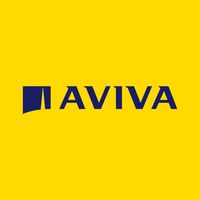5 ways to manage age differences in your business through the reward strategy
Well, no. Wrong actually!

At Aviva, the average age of a UK employee is 39. What this doesn’t tell you is that the age span is 17 to 75… and you don’t need me to tell you that people at the outer points of that age range don’t want the same things. Mathematically, it would be possible not to have a single 39-year old on our payroll… and still come out with this figure as the mean age!
Obviously, it’s not practical (or useful) to break your database right down to, say, five-year segments. But, at Aviva, we’ve found it helpful to consider the following demographic age groups:
- Baby Boomers – born between 1946 and 1964
- Generation X – born between 1965 and 1980
- Millennials – born between 1981 and 2000
- Generation Z – born after 2000
What difference does age make?
We need to recognise that differing generations will have diverse needs, and very different demands on their time and energy. Millennials may be caring for both young children and elderly parents; Generation Z may be struggling to get onto the property ladder; and Baby Boomers will be increasingly aware that retirement is getting ever closer.
Then there’s the question of health. As we age, it’s normal to acquire more long-term health conditions. And the effects of the ageing population means that a third of the UK workforce will be 50 or older by 2020.
What does that mean for a benefits strategy? One thing we certainly can say is that the demand for workplace benefits is likely to develop and grow, so it helps to ensure that your strategy is easily adaptable. But meeting the needs of an ageing workforce doesn’t necessarily mean that every measure you take will be expensive. Ensuring full and equal access to support at work can be a simple matter of good organisation and communication – and it costs nothing to normalise conversations about health, or to show empathy for employees who are more likely to have multiple health conditions.
Communication is key to an effective benefits strategy – and age has a bearing here, too. To appeal to different age groups, we don’t just need to consider what we’re offering them – but also the way we’re offering it. Communication needs differ between the generations – so consider varying the tone and content of your messages as well as the channels you use. Older workers may also have different learning styles, and possibly different reactions to change and stress.
Five ways to embrace age differences in your benefits strategy:
- Recognise that age diversity within your workforce leads to competitive diversity – helping your organisation to understand and relate to different mindsets among your customers and partners. A benefits strategy should be built to attract and retain employees across all age groups
- Ensure your strategy addresses everyone’s priorities. Where younger employees may be looking to obtain a first mortgage, older ones may be making plans for retirement
- Allow for communication across the generations; what can the younger generation learn from the older and vice versa?
- Facilitate flexible working patterns in response to the varying pressures and commitments which each different life stage brings
- Remember that the health-related elements of your strategy will grow in importance as the age of your workforce increases. Consider offering benefits such as musculoskeletal wellbeing or access to onsite physiotherapy.
They may say that age is only a number…. but it’s a number we can’t ignore. It’s important to provide appropriate benefits across the generations, in line with the varying needs of employees of differing ages
The author is Sophie Money workplace wellbeing manager at Aviva Group Protection.
This article is provided by Aviva.
If you'd like to hear a lot more on the topic of employee wellbeing, and also specifically from Aviva, then sign up for Employee Wellbeing Congress on 20 June in London, where they'll be exhibiting.
Supplied by REBA Associate Member, Aviva
Our purpose is to be with you today, for a better tomorrow.






